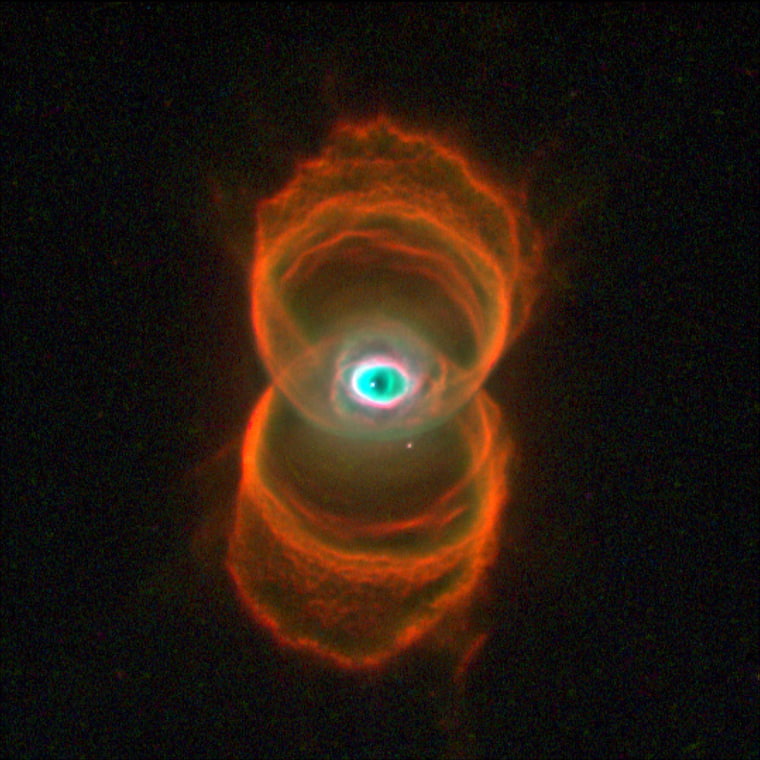Hourglass Nebula

Like the Southern Ring Nebula, here we have another planetary nebula called the Hourglass Nebula (or Engraved Hourglass Nebula, according to Wikipedia). This is nothing spectacular in terms of astronomy - just the last gasp of a mid-sized star at the end of its life. But this striking nebula with its eerie eye-like shape in the middle caught my imagination as a kid and got me more interested in astronomy and nebulas in particular.
Unlike Minkowski 2-9 - another planetary nebula, whose complex bi-lobed shape is caused by interactions with it’s companion star, it is theorised that the hourglass shape of this nebula is caused by the expansion of a fast stellar wind within a slowly expanding cloud, which is denser near its equator than near its poles.1 The vivid colours given off by the nebula are the result of different ‘shells’ of elements being expelled from the dying star, in this case helium, nitrogen, oxygen and carbon.2
Further Reading
Footnotes
-
Hubble Finds an Hourglass Nebula around a Dying Star - HubbleSite ↩︎